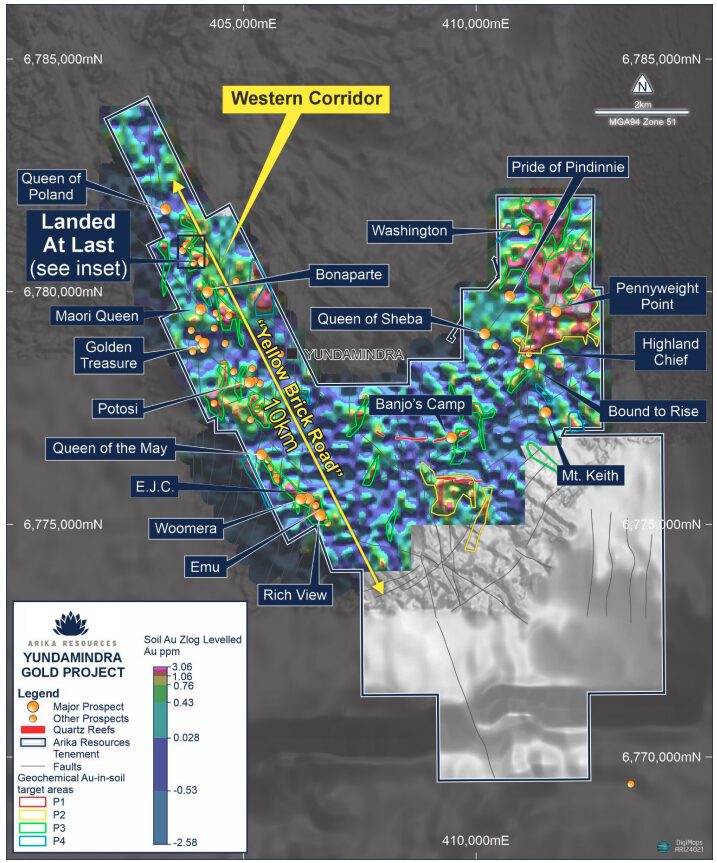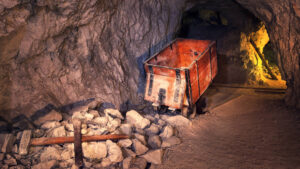Arika flexes strong hits with 4m at 41.56g/t, extends F1 Fault at Landed at Last

With strong early results in hand, Arika is pushing the boundaries - testing for deeper and longer extensions beyond previously intersected zones. Pic: Getty Images
- Arika intersects thick, high-grade gold at the F1 Fault
- The F1 Fault structure now extends to more than 400m
- Priority targets identified from this work will be tested as part of the current drill program
Special report: Arika Resources’ first drill results at Yundamindra point to strong upside, with the F1 Fault gold structure now extending over 400m in strike and 100m deep.
The company launched a ~10,000m exploratory drilling campaign in June following a $5m capital raise.
Drilling initially re-commenced at the F1 Fault, comprising 17 reverse circulation (RC) holes for a total of 1,856m.
Cutting through the Landed at Last Prospect, the F1 Fault is part of a series of northeast-trending structures near the northern end of the ‘Yellow Brick Road’, a 16km-long, mineral-rich corridor along the western flank of the Yundamindra Syncline.
The corridor is defined by two major NW-SE trending structures, with numerous NE- SW linking faults.
Both the NW-SE and NE-SW fault orientations carry significant gold mineralisation.
However, previous work has only focused on shallow oxide ore around the historical workings with limited to no drilling testing for depth or strike extensions.

Scale continues to grow
Arika’s (ASX:ARI) current campaign is designed to test for depth and strike extensions beyond the known limits of the previously reported intersections such as 14.8m at 3.10g/t gold from 87m, including 2.15m at 5.49g/t/ from 90m and 2.25m at 9.76g/t from 99m.
Standout results from the most recent round of drilling include 4m at 41.56g/t gold from 52m, 27m at 2.45g/t from 61m, and 28m at 1.16g/t from 16m.
ARI managing director Justin Barton said together with the Landed at Last mineralisation, this system now extended for more than 1.3km along strike and remains open in all directions.
“Importantly, this is just one of a host of under-explored prospects along the +10km long mineralised corridor that we call the ‘Yellow Brick Road’ that we are now methodically and systematically testing,” Barton said.
“Drilling has since progressed to test the Bonaparte prospect and is currently testing the exciting Banjo’s Camp prospect, before moving onto a number of other priority target areas.
“The more work we do, the more the sheer scale and significance of the opportunity in front of us continues to grow.
“Our technical team, supported by our excellent drilling teams and consultants, continues to undertake outstanding work to maximise our chances of exploration success.”
More from ARI: Arika augments Northeastern Goldfields perforation
What’s next?
Looking ahead, next steps include wide-spaced sectional drilling at Banjo’s Camp and analysis of data from a drone-supported aeromagnetic survey recently completed over the southern half of the Yundamindra project area.
The results from the survey will be used to further refine target selection prior to drilling.
Meanwhile at Kookynie, data from a drone-supported aeromagnetic survey completed at the Ithaca Prospect adjacent to Genesis Minerals’ Ulysses gold asset is being assessed by Core Geophysics.
Results from the survey will be used to further refine and prioritise targets for planned drill testing in the coming weeks.
This article was developed in collaboration with Arika Resources, a Stockhead advertiser at the time of publishing.
This article does not constitute financial product advice. You should consider obtaining independent advice before making any financial decisions.
Related Topics

UNLOCK INSIGHTS
Discover the untold stories of emerging ASX stocks.
Daily news and expert analysis, it's free to subscribe.
By proceeding, you confirm you understand that we handle personal information in accordance with our Privacy Policy.








